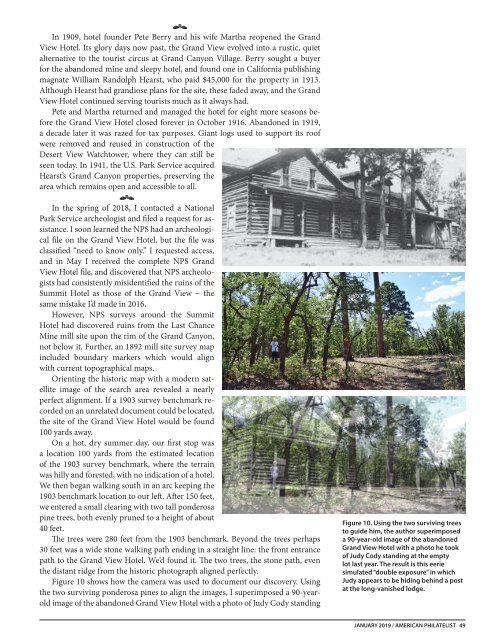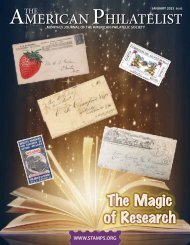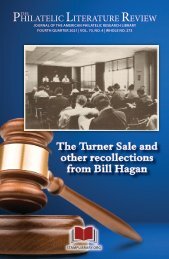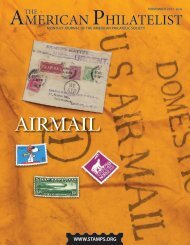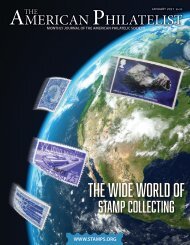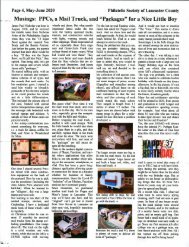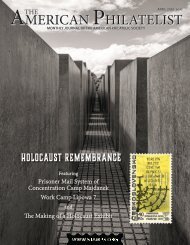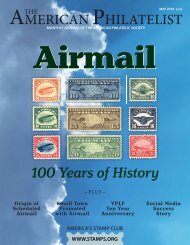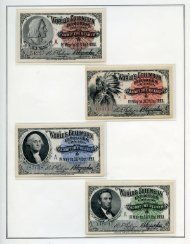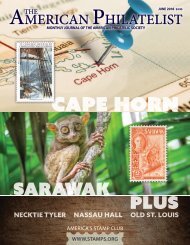January 2019
You also want an ePaper? Increase the reach of your titles
YUMPU automatically turns print PDFs into web optimized ePapers that Google loves.
0<br />
In 1909, hotel founder Pete Berry and his wife Martha reopened the Grand<br />
View Hotel. Its glory days now past, the Grand View evolved into a rustic, quiet<br />
alternative to the tourist circus at Grand Canyon Village. Berry sought a buyer<br />
for the abandoned mine and sleepy hotel, and found one in California publishing<br />
magnate William Randolph Hearst, who paid $45,000 for the property in 1913.<br />
Although Hearst had grandiose plans for the site, these faded away, and the Grand<br />
View Hotel continued serving tourists much as it always had.<br />
Pete and Martha returned and managed the hotel for eight more seasons before<br />
the Grand View Hotel closed forever in October 1916. Abandoned in 1919,<br />
a decade later it was razed for tax purposes. Giant logs used to support its roof<br />
were removed and reused in construction of the<br />
Desert View Watchtower, where they can still be<br />
seen today. In 1941, the U.S. Park Service acquired<br />
Hearst’s Grand Canyon properties, preserving the<br />
area which remains open and accessible to all.<br />
0<br />
In the spring of 2018, I contacted a National<br />
Park Service archeologist and filed a request for assistance.<br />
I soon learned the NPS had an archeological<br />
file on the Grand View Hotel, but the file was<br />
classified “need to know only.” I requested access,<br />
and in May I received the complete NPS Grand<br />
View Hotel file, and discovered that NPS archeologists<br />
had consistently misidentified the ruins of the<br />
Summit Hotel as those of the Grand View − the<br />
same mistake I’d made in 2016.<br />
However, NPS surveys around the Summit<br />
Hotel had discovered ruins from the Last Chance<br />
Mine mill site upon the rim of the Grand Canyon,<br />
not below it. Further, an 1892 mill site survey map<br />
included boundary markers which would align<br />
with current topographical maps.<br />
Orienting the historic map with a modern satellite<br />
image of the search area revealed a nearly<br />
perfect alignment. If a 1903 survey benchmark recorded<br />
on an unrelated document could be located,<br />
the site of the Grand View Hotel would be found<br />
100 yards away.<br />
On a hot, dry summer day, our first stop was<br />
a location 100 yards from the estimated location<br />
of the 1903 survey benchmark, where the terrain<br />
was hilly and forested, with no indication of a hotel.<br />
We then began walking south in an arc keeping the<br />
1903 benchmark location to our left. After 150 feet,<br />
we entered a small clearing with two tall ponderosa<br />
pine trees, both evenly pruned to a height of about<br />
40 feet.<br />
The trees were 280 feet from the 1903 benchmark. Beyond the trees perhaps<br />
30 feet was a wide stone walking path ending in a straight line: the front entrance<br />
path to the Grand View Hotel. We’d found it. The two trees, the stone path, even<br />
the distant ridge from the historic photograph aligned perfectly.<br />
Figure 10 shows how the camera was used to document our discovery. Using<br />
the two surviving ponderosa pines to align the images, I superimposed a 90-yearold<br />
image of the abandoned Grand View Hotel with a photo of Judy Cody standing<br />
Figure 10. Using the two surviving trees<br />
to guide him, the author superimposed<br />
a 90-year-old image of the abandoned<br />
Grand View Hotel with a photo he took<br />
of Judy Cody standing at the empty<br />
lot last year. The result is this eerie<br />
simulated “double exposure” in which<br />
Judy appears to be hiding behind a post<br />
at the long-vanished lodge.<br />
JANUARY <strong>2019</strong> / AMERICAN PHILATELIST 49


